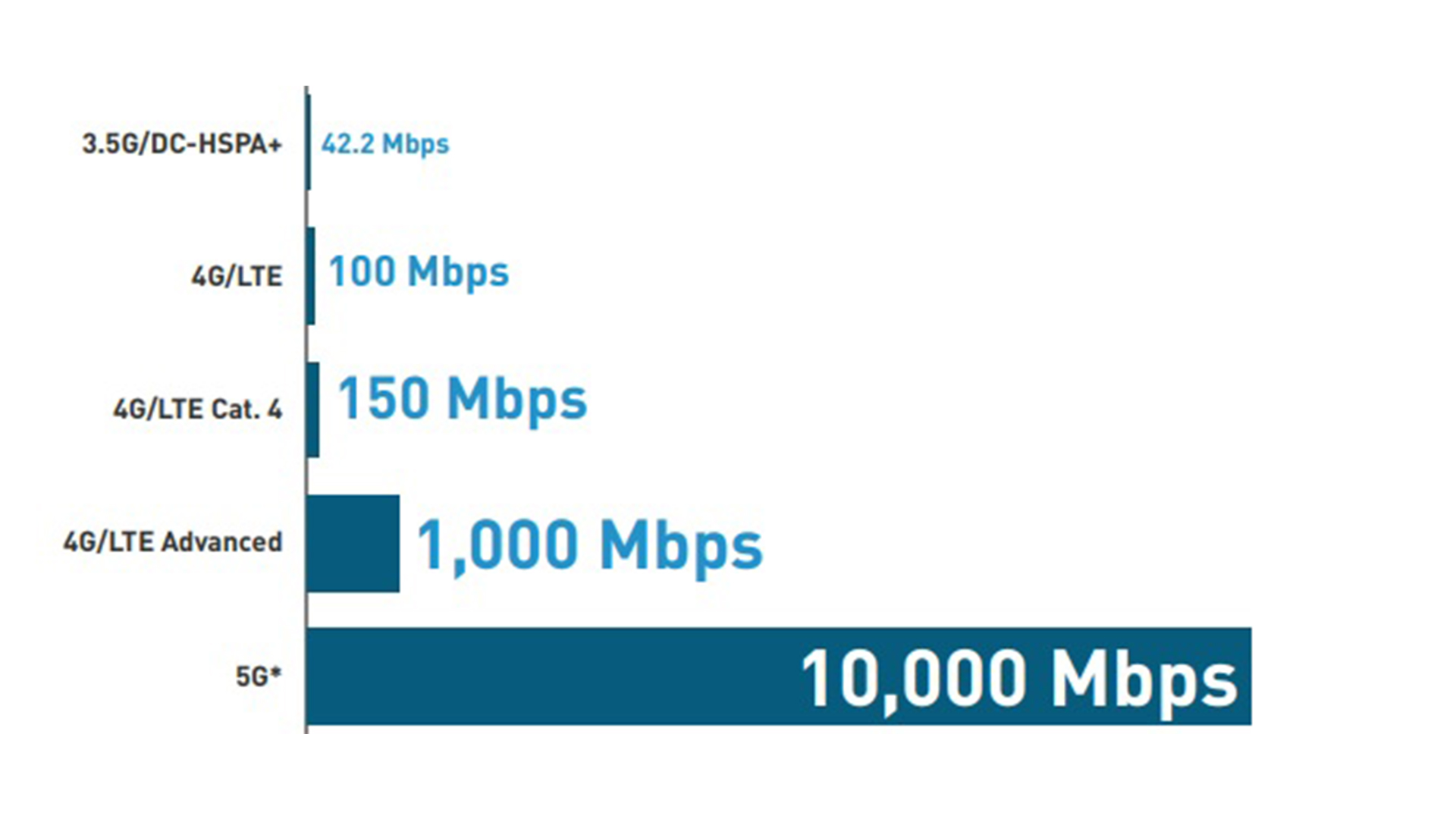What is 5G?
5G is the fifth generation of wireless technology that has taken the world by storm. It is a recent addition but different from 1G, 2G, 3G, and 4G networks. When the 1G enabled users to use their phones outside their homes, 2G got recognition for its short-messaging layer. 3G worked as a core for the speed needed for smartphones. 4G was worth praising for its high transfer rates. However, the 5G network received the most appreciation from different categories for its capabilities and transformational speeds. 5G enabled everyone to connect virtually with their devices, objects, and machines in different environments and settings.
5G technology delivers ultra-low latency and high multi-Gbps peak data speeds. You can expect massive network capacity and a better experience when using the 5G mobile network. 5G Intelligent Communication Portable Terminal Solution Provider.The speed and efficiency make it a preferred choice for individuals and industries. They can connect quickly in real time and do their job smoothly with ultra-low latency and increased availability of 5G.
How Does 5G Work?
5G is OFDM-based like the previous network, 4G LTE. It will work on the same principles with better capabilities. In brief, the 5G interface will enhance OFDM capabilities. Hence, users can have higher degrees of scalability and flexibility. They can have better and faster mobile broadband services than 4G LTE. In addition, 5G will cover new service areas, including massive IoT connections and mission-critical communications.
Like previous networks, 5G relies on cell sites to transmit data through radio waves. The cell sites use wired or wireless connections to connect to networks. 5G modifies the encoding of data and increases the number of airwaves for carriers. Here are the ways 5G works to transmit data and provides superior speed.
· OFDM: Orthogonal Frequency Division Multiplexing is a modulation format that encodes high-band airwaves. It offers improved flexibility and lower latency than 4G LTE.
· Transmitters: 5G uses small transmitters installed on buildings for better connectivity. However, 4G and other networks rely only on mobile towers. 5G delivers higher speed for those small transmitters and supports many devices with inspiring speeds.
· Network Slicing: Network operators use 5G to deploy many virtual networks from the same infrastructure. They can customize each for individuals and businesses for a streamlined experience.

How is 5G Different from the Other “Gs”?
5G is different from the other Gs in many ways. The previous generation networks are 1G, 2G, 3G, and 4G. The first generation came in 1980 and was limited to delivering analog voice. The second generation has been around since the early 1990s and introduced digital voice.
The third generation brought mobile data features in the early 2000s, and the fourth generation has been around since the 2010s. The 4G LTE brought revolutionary changes by introducing mobile broadband.
All the previous generations had some new features and served the mobile industry in specific ways. However, 5G came with advanced technology to bridge the gap created by previous generations. It offers better connectivity, higher capabilities, and superior speed than other networks.
In brief, 5G features a reliable and more capable interface to empower new deployment models and deliver better and new services to users. 5G will set examples in the mobile ecosystem with its exceptional reliability, low latency, and high speed. This mobile network will secure its place in every industry, including healthcare, transportation, digitized logistics, and agriculture. However, here are a few differences between 5G and previous Gs.
· Superior Speed: The benefit of 5G is that it can achieve a speed of 10 gigabits a second. This feature makes it ten times faster than the previous network. Users can back up a database and download a film in a fraction of the time with a 5G network. However, other networks will take longer.
· Low Latency: The low latency contributes to the higher speed of the 5G network. Latency is the delayed time between sending and receiving data. The latency of the 4G network is 200 milliseconds, but the 5G reduces it to one millisecond. There is a significant difference between both.
· Higher Bandwidth: 5G can expand radio spectrum resources and run a broad range of bandwidths. Also, it can operate on mmWave to offer more benefits. It increases the capacity and multi-Gbps throughput. This bandwidth helps devices connect and send data at any time.

How Fast is 5G?
The speed of 5G makes it different from other Gs. You can expect up to 20 Gbps peak data rates depending on the IMT-2020 requirements. The downloading speed is a significant improvement of 5G. You can download a song in seconds and a movie in minutes with 5G. You can get video and audio in HD and console-quality games on the go. You can share, post, work, and stream in public without bothering about the connection and the speed. However, 5G offers more benefits than superior speed.
5G offers more network capacity with its new spectrum, including mmWave. In addition, the lower latency helps with a more immediate response. Hence, users can have a uniform and enhanced experience with this network. The data will stay high all the time, even when moving around. More importantly, 5G NR has a connection with the Gigabit LTE coverage foundation. Hence, users will enjoy Gigabit-class connectivity everywhere.
How 5G Benefits You
5G has the potential to change the mobile experience of users. All the credit goes to its incredible speed and advanced features. It provides low latency, massive capacity, and high speeds and ensures a better connection. 5G will revolutionize industries with immediate and fast connections. It will make businesses more efficient and reliable. Customers can access all the information fast and go ahead confidently. 5G can be beneficial for all age groups and industries. The peak speed of this network will be 100x more than the 4G network. Besides, the low latency will support new applications, artificial intelligence, and the Internet of Things. The increased capacity of the 5G network will reduce the load spike impact and help with a better user experience. Here are the detailed benefits you can go through.
· Speed Upgrades: Mobile networks have improved consistently to help users with higher speeds. The 2G is better than 1G, 3G is better than 2G, 4G is better than 3G, and 5G is better than all Gs. The 5G will push 4G far beyond when it comes to speed. The predicted speed is 10 Gbps which is 100x faster than 4G. The superior speed will enable users to download high-resolution movies within minutes. It will save time and offer a better experience.
· Seamless Device Connectivity: 5G network enables devices to connect fast. All can get instant connection in real-time and access data quickly. A home can use hundreds of machines for sending and receiving data with a 5G network. The number will be more than thousands in industrial sectors.
· Low Response Time: 5G is worth considering in different sectors for faster speed. All the credit goes to the response time. Commercial apps need a fast network to respond to a request immediately. 5G will address this concern and make access easy and fast for users.
· Inspiring Reliability: 5G is more reliable than previous Gs for its capacity, loading speed, and low latency. It is more productive and efficient than other networks. Since there will be no connection issues, users can connect seamlessly without interruption. It can help those who need a connection in real-time.
· Increased Capacity: 5G has many advanced features to dominate its previous versions. Hassle-free and fast connectivity and increased connection capacity make it the most preferred. We can take the example of public places where gatherings use cell phones. When most use phones in events and shows, it puts pressure on the network and impacts the speed. However, users will have a seamless connection with 5G. Low latency and increased capacity take all the credit.

Where Is 5G Being Used?
5G is being used in three main connected service types. These are enhanced mobile broadband, massive IoT, and mission-critical communications. The improved connectivity and speed upgrades secure its place in different industries. Its flexibility enables it to adapt to different settings and working conditions. 5G Intelligent Communication Portable Terminal Solution Provider.However, here are the service types used for the 5G network.
Enhanced Mobile Broadband
5G network takes the most credit for improving our mobile experience. However, it offers more benefits than an improved smartphone experience. 5G can also contribute to AR and VR experience with lower latency and more reliable data. The fast connection will help with an immersive experience. eMBB focuses on the high speed of system capacity and end users. It influences end-user experiences by supporting different uses.
Massive IoT
5G is for those who want better connectivity and seamless connection across different devices. It can connect several sensors virtually. It offers low-cost connectivity but a better connectivity solution. IoT with a 5G network can monitor water levels, cleanliness, and HVSC systems. IoT-focused industries will benefit immensely from 5G. They can integrate IoT and AI devices seamlessly within the 5G network.
Mission-Critical Communications
5G enables services to transform the efficiency of different industries with low response time and reliability. It ensures seamless and fast communications in critical infrastructure, medical procedures, and vehicles. Other benefits are remote control and monitoring, service restoration, quick solution, and automation.


 French
French German
German Arabic
Arabic Italian
Italian Spanish
Spanish Japanese
Japanese Persian
Persian Korean
Korean Chinese (Simplified)
Chinese (Simplified)









